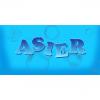Hi everyone,
Here is the source code for the original CSSM shadow mapping API: https://drive.google.com/file/d/0Bzrpqv04ufr9d0dZX3hTdl9hbVk/view?usp=sharing
It is missing the math library but things are pretty clear (left handed system + column major matrices and order of multiplication is from left to right). Sorry about some comments on Croatian language.
Paper is here: https://bib.irb.hr/datoteka/570987.12_CSSM.pdf
Sample projects are here (DX9 and DX10): http://free-zg.t-com.hr/cssm/
I still don’t have time to start working on “CSSM with Depth Histograms” (image attached), but maybe this will kick-start something.
I should probably make some kind of GitHub project with original CSSM and then slowly start updating it to Depth Histogram version (with the help of the community) but I’m currently too busy with my current project. So, if someone is willing to help out and compose starter project that would be great…
NOTE: I wouldn’t prefer using my old sample projects because they are MFC + DX Effects (which are not that commonly used any more).
Cheers,
--
Ivica Koli?





